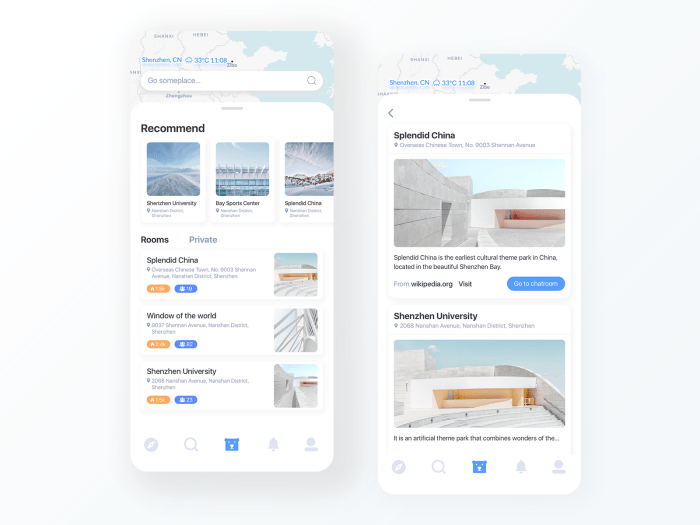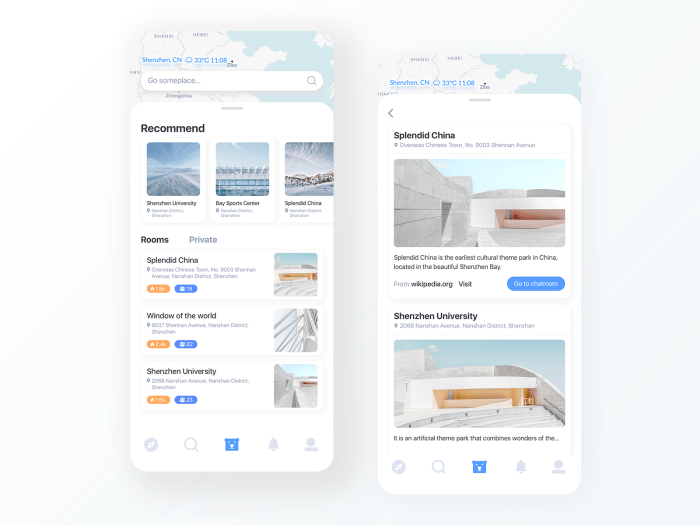DIY chatrooms are experiencing a resurgence, driven by a desire for greater control, community building, and niche interests. From simple messaging platforms to sophisticated virtual spaces, individuals are taking the reins to create their own online havens. This guide explores the exciting world of DIY chatrooms, offering a comprehensive roadmap for building, customizing, and managing your own online community.
Table of Contents
The rise of DIY chatrooms reflects a growing need for personalized and tailored online experiences. Whether you’re passionate about a specific hobby, seeking to connect with like-minded individuals, or simply yearning for a sense of belonging, creating your own chatroom empowers you to build a community that aligns with your values and interests.
Monetization and Sustainability

Creating a sustainable DIY chatroom requires careful consideration of monetization strategies. While maintaining a community-driven focus is crucial, finding ways to generate revenue can help ensure the chatroom’s long-term viability.
Monetization Strategies
There are several potential monetization models for DIY chatrooms. Each approach has its own advantages and disadvantages.
Advertising
Display advertising is a common monetization method for online platforms. This involves placing ads within the chatroom interface, such as banner ads or interstitial ads.
- Pros: Relatively simple to implement, potentially high revenue, can be targeted to specific demographics.
- Cons: Can be intrusive to users, may negatively impact user experience, requires a large user base to be effective.
Subscriptions
Offering premium features or content to paying subscribers can be a viable monetization model. This could include access to exclusive channels, special events, or advanced features.
- Pros: Provides a more direct revenue stream, can create a sense of exclusivity, can be tailored to specific user needs.
- Cons: Requires a strong value proposition to attract subscribers, can be difficult to manage, may lead to a tiered community.
Premium Features
Offering additional features for a fee can be another way to generate revenue. This could include features such as custom themes, avatar customization, or enhanced search capabilities.
- Pros: Can provide a revenue stream without requiring a subscription, can be tailored to specific user preferences.
- Cons: May not be as lucrative as other models, requires careful consideration of feature pricing to avoid user dissatisfaction.
Donations
Allowing users to make voluntary donations can be a simple way to support the chatroom. This can be implemented through platforms like Patreon or PayPal.
- Pros: Easy to implement, can foster a sense of community support, can provide a stable source of revenue.
- Cons: Relies on user generosity, may not generate significant revenue, requires consistent engagement with donors.
Challenges and Opportunities
Sustaining a DIY chatroom in the long term presents both challenges and opportunities.
Challenges
- Competition: The online chatroom landscape is highly competitive, with many established platforms vying for users.
- User Engagement: Maintaining user engagement and activity is crucial for the success of any chatroom.
- Moderation: Ensuring a safe and welcoming environment for users requires effective moderation policies and practices.
- Technical Support: Maintaining and updating the chatroom software requires technical expertise and resources.
Opportunities
- Niche Communities: Focusing on a specific niche or interest can help attract a dedicated audience.
- Community Building: Creating a strong sense of community and belonging can encourage user loyalty and engagement.
- Innovation: Experimenting with new features and technologies can help differentiate the chatroom from competitors.
- Partnerships: Collaborating with other organizations or businesses can provide access to resources and a wider audience.
Security and Privacy: Diy Chatroom
![]()
In the realm of online communication, chatrooms offer a platform for individuals to connect and interact. However, with the exchange of sensitive information, it is crucial to prioritize security and privacy to safeguard user data.
Security Threats and Vulnerabilities
Chatrooms can be susceptible to various security threats, including:
- Data breaches: Hackers may exploit vulnerabilities in the chatroom platform or user devices to gain unauthorized access to sensitive data, such as personal information, messages, and files.
- Malware and phishing attacks: Malicious actors can distribute malware through chatroom links or attachments, compromising user devices and stealing data.
- Spam and unsolicited messages: Chatrooms can be targeted by spammers who flood the platform with unwanted messages, disrupting conversations and potentially exposing users to malicious links.
- DDoS attacks: Denial-of-service attacks can overload the chatroom server, making it inaccessible to legitimate users.
Securing Your Chatroom, Diy chatroom
To mitigate these risks, implementing robust security measures is paramount:
- Strong authentication: Require users to create strong passwords and enable two-factor authentication for enhanced security.
- Data encryption: Encrypt all data transmitted between users and the server to prevent eavesdropping and data interception.
- Regular security updates: Regularly update the chatroom platform and user devices to patch vulnerabilities and enhance security.
- Anti-spam measures: Implement spam filters and moderation tools to identify and remove unsolicited messages.
- DDoS protection: Use a reliable DDoS mitigation service to protect the chatroom server from denial-of-service attacks.
Protecting User Information
Safeguarding user privacy is essential:
- Data minimization: Collect only the necessary information from users and avoid collecting sensitive data unless absolutely required.
- Data retention policies: Establish clear data retention policies and delete user data when it is no longer needed.
- User consent: Obtain explicit consent from users before collecting or using their personal information.
- Privacy policy: Publish a comprehensive privacy policy that Artikels how user data is collected, used, and protected.
Legal Considerations
Running a chatroom, even a DIY one, comes with legal implications that need to be carefully considered. Understanding these implications is crucial for ensuring your chatroom operates within the bounds of the law and avoids potential legal issues.
Data Protection Laws
Data protection laws, such as the General Data Protection Regulation (GDPR) in the European Union and the California Consumer Privacy Act (CCPA) in the United States, are designed to protect the privacy and security of personal data.
- Data Collection and Use: Your chatroom may collect personal data from users, including usernames, email addresses, and potentially even location data. You need to ensure that you are collecting this data lawfully, with explicit consent from users, and only for legitimate purposes. You should clearly Artikel your data collection and use practices in your chatroom’s terms of service.
- Data Security: You have a legal obligation to protect user data from unauthorized access, use, disclosure, alteration, or destruction. This involves implementing appropriate technical and organizational security measures, such as encryption and access controls.
- Data Retention: You should have a clear policy on how long you retain user data. This policy should be in line with data protection laws and your chatroom’s purpose.
- User Rights: Users have rights regarding their personal data, such as the right to access, rectify, erase, and restrict processing. You need to ensure that you are able to fulfill these rights upon request.
Terms of Service
A comprehensive terms of service (TOS) agreement is essential for any chatroom. It establishes the rules and guidelines for user behavior, Artikels your responsibilities as a chatroom owner, and protects you from potential legal issues.
- Acceptable Use Policy: Your TOS should clearly define acceptable and unacceptable behavior within your chatroom. This includes prohibiting illegal activities, harassment, hate speech, and other forms of misconduct.
- Content Moderation: You need to Artikel your approach to content moderation, including how you will handle inappropriate or illegal content posted by users. You may also want to consider using automated moderation tools.
- Intellectual Property: Your TOS should address intellectual property rights, including copyright and trademark. Users should be prohibited from posting copyrighted content without permission.
- Disclaimer: You should include a disclaimer that clearly states you are not responsible for the content posted by users and that you cannot guarantee the safety or accuracy of information shared in the chatroom.
- Indemnification: This clause protects you from potential legal claims arising from user actions. It requires users to indemnify you for any losses or damages caused by their actions.
Potential Liabilities and Responsibilities
As a chatroom owner, you may be held liable for certain actions or inactions related to your platform.
- Content Liability: While you may not be directly responsible for the content posted by users, you could be held liable if you fail to take reasonable steps to remove illegal or harmful content. This includes having a clear content moderation policy and procedures for handling reports of abuse.
- Negligence: You could be held liable for negligence if you fail to take reasonable steps to protect users from harm. This includes ensuring the safety and security of your chatroom platform and taking measures to prevent cyberbullying, harassment, and other forms of abuse.
- Privacy Violations: You could face legal action if you violate users’ privacy rights, such as by collecting or using their personal data without their consent or by failing to protect their data from unauthorized access.
Resources for Legal Information
- Your Country’s Data Protection Authority: The data protection authority in your country can provide information on data protection laws and regulations.
- Legal Aid Organizations: Legal aid organizations can provide free or low-cost legal advice to individuals and small businesses.
- Online Legal Resources: Several online resources offer information on legal issues, including data protection, terms of service, and liability. You can find these resources through online searches or legal databases.
Case Studies and Examples

Exploring real-world examples of successful DIY chatrooms can provide valuable insights and inspiration for your own project. These case studies highlight diverse approaches, unique features, and lessons learned from experienced chatroom creators and community managers.
Successful DIY Chatrooms
Examining successful DIY chatrooms offers valuable insights into their design, features, and community management strategies.
- The Programming Forum: This popular forum caters to programmers of all levels, offering dedicated channels for specific programming languages, technical discussions, and code sharing. Its success stems from a strong focus on community building, fostering a welcoming environment for beginners and experts alike.
- The Gaming Guild: This chatroom fosters a thriving community of gamers, providing channels for discussing games, coordinating online multiplayer sessions, and sharing gameplay strategies. Its success lies in its active community management, regular events, and a strong focus on fostering a sense of belonging.
- The Creative Writing Workshop: This online space serves as a platform for aspiring writers to connect, share their work, and receive feedback from peers. Its success is attributed to its emphasis on constructive criticism, supportive community, and regular writing prompts to inspire creativity.
Insights from Experienced Chatroom Creators
Experienced chatroom creators offer valuable insights into building and managing successful online communities.
- Clear Communication: Establishing clear communication guidelines and expectations for users is crucial. This includes defining acceptable behavior, addressing potential conflicts, and ensuring a safe and respectful environment.
- Active Community Management: Engaging with users, responding to queries, and organizing events are essential for fostering a thriving community. Proactive moderation helps maintain order and prevent abuse.
- Focus on User Needs: Understanding the needs and interests of your target audience is paramount. Tailoring features, content, and community activities to their preferences enhances user engagement and retention.
Chatroom Models and Their Strengths and Weaknesses
Comparing different chatroom models helps understand their strengths and weaknesses, enabling you to choose the most suitable option for your project.
| Model | Strengths | Weaknesses |
|---|---|---|
| Forum-based | Organized discussions, searchable archives, structured content | Can be less interactive, slower response times, limited real-time communication |
| Real-time chat | Instantaneous communication, fosters a sense of community, allows for spontaneous interactions | Can be chaotic, difficult to manage large groups, limited searchability |
| Hybrid model | Combines the benefits of forums and real-time chat, offering flexibility and diverse communication options | Requires more complex development and management |
The Future of DIY Chatrooms
The landscape of online communication is constantly evolving, and DIY chatrooms are poised to play an increasingly significant role in this evolution. Emerging technologies and shifting user preferences are shaping the future of these platforms, offering both exciting opportunities and potential challenges.
The Impact of Emerging Technologies
The integration of emerging technologies is set to revolutionize the way DIY chatrooms operate and interact with users.
- Artificial Intelligence (AI): AI can enhance chatroom experiences by automating tasks, personalizing content, and providing more engaging interactions. AI-powered chatbots can offer 24/7 support, answer user questions, and even moderate conversations. This can significantly improve the user experience and make chatrooms more accessible. For instance, AI can be used to analyze user behavior and suggest relevant topics or connect users with similar interests.
- Blockchain Technology: Blockchain can provide a secure and transparent platform for DIY chatrooms. Decentralized chatrooms powered by blockchain technology could offer greater control over data and privacy, fostering a more trust-based environment. For example, blockchain can be used to create a decentralized reputation system, where users can earn trust based on their contributions to the chatroom.
- Virtual and Augmented Reality (VR/AR): VR and AR technologies can create immersive and interactive chatroom experiences. Users can engage in virtual environments, interact with avatars, and participate in collaborative activities. This can foster a sense of community and create a more engaging experience for users. For instance, VR chatrooms could allow users to meet and interact with others in virtual spaces, creating a more immersive and social experience.
Building a DIY chatroom is a rewarding journey that combines technical skills, community management, and a touch of creativity. By understanding the fundamental principles of chatroom development, leveraging available resources, and fostering a positive online environment, you can create a thriving space for meaningful connections and shared experiences. As technology continues to evolve, the future of DIY chatrooms promises even greater possibilities for personalized and engaging online communities.
Building your own chatroom can be a fun and rewarding project. It allows you to customize the experience to your liking, adding features and functionalities that suit your needs. If you’re looking for a more streamlined approach, you can explore existing platforms like zerbaxa , which might offer a ready-made solution. However, for the ultimate creative control, a DIY chatroom might be the perfect fit.


